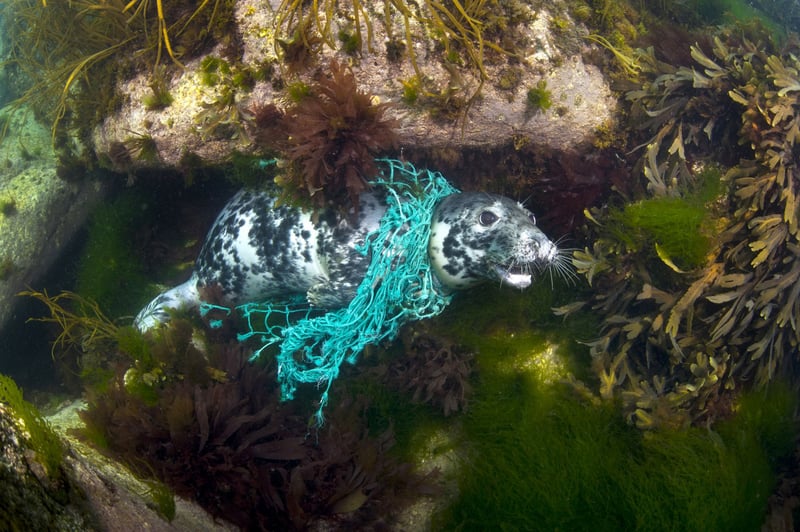Diving Deep: Plastic Pollution and its Effects
Embark on a voyage of discovery as we uncover the intricate dynamics between plastic pollution and climate change in our precious marine ecosystems. Throughout this blog post, we delve into the depths of these interconnected challenges, shedding light on their consequences and rallying for urgent solutions. Join us as we navigate the currents of environmental awareness and advocacy.
What is Plastic pollution?
Plastic pollution can be considered marine debris. Marine debris refers to any solid, manufactured, or processed material that enters the marine environment. Some examples of marine debris can include plastic bottles, bags, fishing gear, cigarette butts, and even larger items like abandoned ships or fishing gear. These materials can last in marine environments for a long time, posing serious threats to marine life, and ecosystems.

“This albatross carcass was one of the scores recently found packed with plastic trash on Midway Island, where scientists estimate 99 percent of the birds have some plastic in their stomachs”
Marine debris can entangle marine animals, causing injury or death, or be ingested by them, leading to internal injuries, digestive blockages, or toxicity.

According to available data, entanglement emerges as a more severe threat to marine mammals compared to ingestion. This is evidenced by the wider range of species affected, the higher frequency of occurrences, and the greater impact on individuals. While cases of mortality from ingestion are rare, almost EVERY SPECIES with documented entanglement incidents includes reports of either dead animals or those severely injured.
In the United States, man-made materials were found in a quarter of individual fish, in two-thirds of all fish species tested, and about a third of individual shellfish samples (Greger, 2023).

Plastic items break down into smaller fragments called microplastics through processes like photodegradation and mechanical abrasion. These tiny particles are ingested by a wide range of marine species and can bioaccumulate in the food chain, posing a threat to human health as well.
In conclusion, the plight of marine animals suffering from plastic pollution in our oceans is a call to action that cannot be ignored. As we’ve explored the devastating impact of plastic waste on marine ecosystems, from entanglement to ingestion and beyond, it’s clear that urgent measures are needed to address this global crisis.
By spreading awareness about plastic pollution and its consequences for marine animals, we have the power to ignite change on individual, community, and global levels. Each action, whether it’s participating in beach clean-ups, sharing information on social media, or advocating for policy changes, contributes to a collective effort to safeguard our oceans and the creatures that call them home.
Let us stand united in our commitment to protect marine life, preserve biodiversity, and ensure a sustainable future for generations to come. Together, through education, advocacy, and collective action, we can make a difference and turn the tide against plastic pollution in our precious oceans.
References
Dixon, C. (2016, December 12). Marine animals affected by litter and plastic in the ocean. [Blog post]. https://www.worldanimalprotection.org/latest/blogs/more-marine-animals-harmed-litter-united-nation-report-finds/
Greger, M. (2023, July 13). Microplastics in Fish Fillets. NutritionFacts.org. https://nutritionfacts.org/blog/microplastics-in-fish-fillets/
Laist, D. W. (1997). Impacts of marine debris: entanglement of marine life in marine debris including a comprehensive list of species with entanglement and ingestion records. In Coe, J. M., & Rogers, D. B. (Eds.), Marine Debris: Sources, Impacts, and Solutions (pp. 99-139). Springer.

